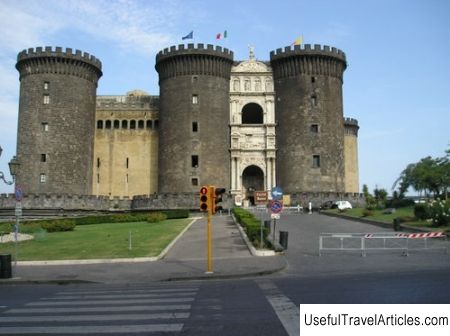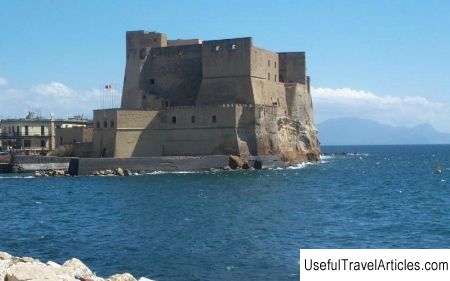New Castle description and photos - Italy: Naples
Rating: 8,1/10 (294 votes) 
New Castle description and photos - Italy: Naples. Detailed information about the attraction. Description, photographs and a map showing the nearest significant objects. The name in English is New Castle. Photo and descriptionThe fortress Maschio Angioino, otherwise called the New Castle (Castel Nuovo), stands on the coast of the Gulf of Naples, serving as a characteristic symbol of the city for travelers arriving from the sea. Forming an irregular trapezoid in plan, it is placed on high escarpments and reinforced along the perimeter with high cogged towers. The unofficial name of Maskio Angioino (`` Angevin husband '') was given to the fortress in honor of Charles I of Anjou, who erected it in 1279-1282. Subsequently, under Alfonso I of Aragon, in 1443-1453. it was almost completely rebuilt by Tuscan and Catalan craftsmen. The three towers of the main facade have the following names: Georgievskaya, Srednaya and Sentry. Between the last two towers is the famous Arc de Triomphe, one of the brilliant examples of Renaissance architecture, in this case following the ancient Roman artistic traditions. The arch was erected in honor of the accession of Alfonso I in Naples and consists of several tiers. The lower tier is decorated with Corinthian columns and a bas-relief `` Alphonse and his retinue ''; the second is a frieze entitled Alphonse's Triumphal Entrance to Naples. The third is also equipped with an arch with Ionic columns, and the fourth has four niches with allegorical statues: Temperance, Strength, Justice and Mercy. The composition is crowned with a semicircular pediment with allegories of two rivers and, above it, a statue of the Archangel Michael, the patron saint of Christian sovereigns - warriors. A number of remarkable artists worked on this arch: Francesco Laurana, Domenico Gagini, Isaiah de Pisa and Pietro di Martino. Behind the Arc de Triomphe, a spacious courtyard opens, from which you can get to the Barons' Hall, where meetings of the city council take place, as well as to the fortress chapels and dungeons. In the Hall of Barons, Ferdinand I of Aragon brutally dealt with the instigators of the baronial uprising of 1486, which is why this hall got its name.       We also recommend reading Ethnographic complex ”Ataman” description and photos - Russia - South: Taman Topic: New Castle description and photos - Italy: Naples. |




